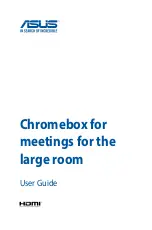
Usage Notes
Purpose
Network Protocol
The Cisco DX650 supports
LLDP-MED on the SW port to
communicate information such as:
•
Voice VLAN configuration
•
Device discovery
•
Power management
•
Inventory management
For more information about
LLDP-MED support, see the
LLDP-MED and Cisco Discovery
Protocol white paper:
http://www.cisco.com/en/US/tech/
tk652/tk701/technologies_white_
paper0900aecd804cd46d.shtml
RTP is a standard protocol for transporting real-time data,
such as interactive voice and video, over data networks.
Real-Time Transport Protocol
(RTP)
RTCP for audio calls is disabled
by default. RTCP for video calls
(including both audio streams and
video streams in the video call) is
enabled by default. You can enable
or disable RTCP on individual
phones from the Cisco Unified
Communications Manager
Administration.
RTCP works in conjunction with RTP to provide QoS data
(such as jitter, latency, and round-trip delay) on RTP streams.
RTCP is also used to synchronize the audio and video stream
in order to provide a better video experience.
Real-Time Control Protocol
(RTCP)
SDP capabilities, such as codec
types, DTMF detection, and
comfort noise, are normally
configured on a global basis by
Cisco Unified Communications
Manager or Media Gateway in
operation. Some SIP endpoints
may allow configuration of these
parameters on the endpoint itself.
SDP is the portion of the SIP protocol that determines which
parameters are available during a connection between two
endpoints. Conferences are established by using only the SDP
capabilities that all endpoints in the conference support.
Session Description Protocol
(SDP)
Like other VoIP protocols, SIP
addresses the functions of signaling
and session management within a
packet telephony network.
Signaling allows transportation of
call information across network
boundaries. Session management
provides the ability to control the
attributes of an end-to-end call.
SIP is the Internet Engineering Task Force (IETF) standard
for multimedia conferencing over IP. SIP is an ASCII-based
application-layer control protocol (defined in RFC 3261) that
can be used to establish, maintain, and terminate calls between
two or more endpoints.
Session Initiation Protocol (SIP)
Cisco Desktop Collaboration Experience DX650 Administration Guide, Release 10.1(1)
15
Network Protocols
















































